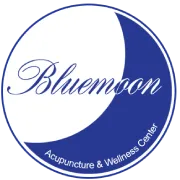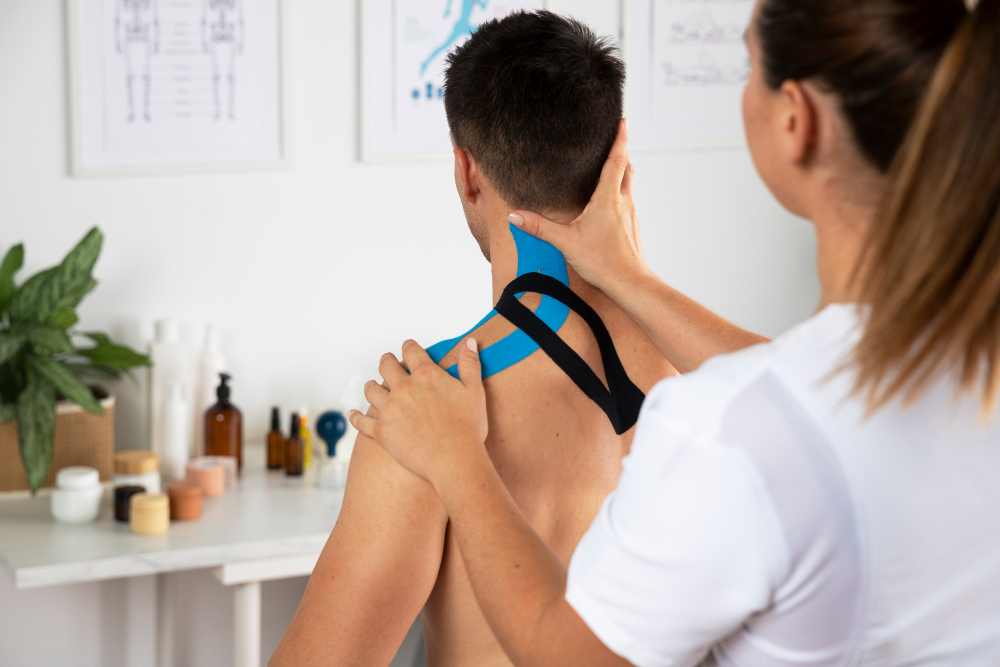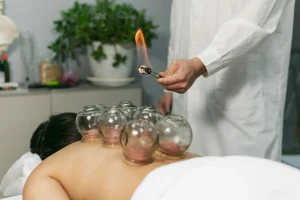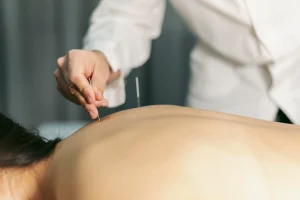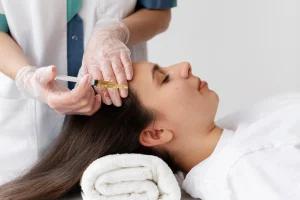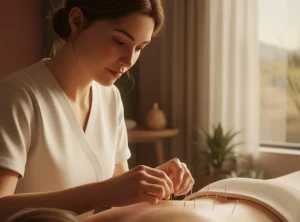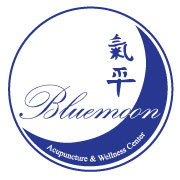
Acupuncture and Oriental Medicine Helps with Strains, Sprains and Pulled Muscles
Imagine you’ve just sprained your ankle. The pain, swelling and redness start up almost immediately. Your first reaction is instinctual — take pressure off your foot. Your next steps are probably just as natural. As you recall your first aid skills, you will likely raise your foot above your heart and apply ice. What might not occur to you in such an emergency is to seek out an Oriental medicine practitioner for acupuncture to ease the pain, reduce the swelling and address any anxiety you may have as a result of the trauma you just sustained.
The initial or acute stage of any strain (stretch or tear in a muscle or tendon), sprain (stretch or tear in a ligament), or pulled muscles presents with varying degrees of pain, swelling and bruising. The pain and inflammation need immediate treatment. The muscles surrounding the site of trauma tighten in an effort to protect the injured site, which results in stiffness of the area. This defensive action does not allow for strong blood flow to the area, even though the blood carries necessary healing agents with it. The white blood cells are one example, and they help clean up the site by disposing of damaged cells.
A practitioner of Oriental medicine can assist the body’s natural defensive mechanisms by needling acupuncture points that stimulate the flow of blood, as well as Qi (life energy force). ‘Blood is the mother of Qi’ and ‘Qi is the master of blood,’ according to the principles of acupuncture and Oriental Medicine. These statements reveal the interdependence existing between these two entities. One basic way to explain this phenomenon is to say the nutrients in blood feed and vitalize Qi, while Qi is fundamental for the production of blood. Qi represents the vital energy upon which all movement in the body relies on.
The second stage of injury is known as rehabilitation. Issues involving the expansion of range of motion (ROM), lessening stiffness, increasing flexibility, and restoring strength and stability take precedence. At this stage, your practitioner may recommend using heat on the injured area. The original signs of inflammation (swelling, redness and sensations of heat) should have ceased or lessened by this time.
While immediately icing an injury helps reduce inflammation, the prolonged use of ice may impair movement and interfere with the recovery process, according to acupuncture and Oriental medicine. You should consult with your practitioner on the proper use and timing of hot and cold therapies. Also at this stage, regular acupuncture treatments can help bring strength and stability back to the injured area.
Acupuncture and Oriental medicine dietary advice includes avoiding eating cold foods like ice cream, iced drinks, and even raw fruits and vegetables while convalescing. The nature of cold is to contract, and an injury in the second stage is treated as a cold condition. Stiffness, loss of strength and ROM all reflect the symptoms of poor circulation due to coldness. Acupuncture and Oriental medicine can successfully treat a sprain, strain or pulled muscle — whether it is in the acute or chronic phase.
Contact Bluemoon Acupuncture And Wellness Center At Oro Valley Arizona (520-505-1442) to learn more about how acupuncture and Oriental medicine can improve your musculoskeletal health
